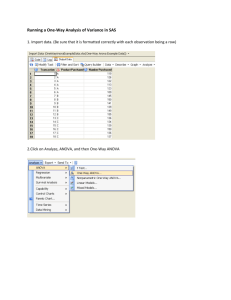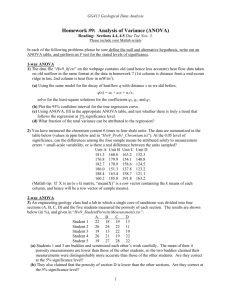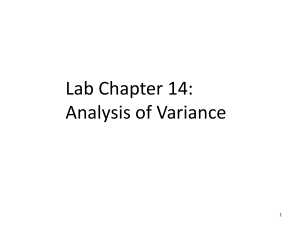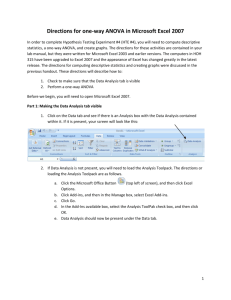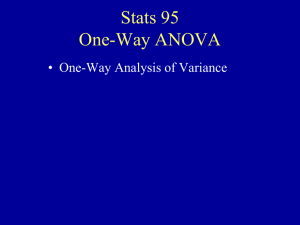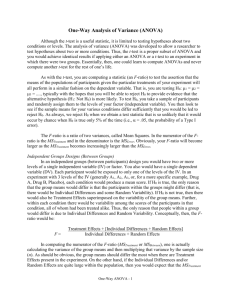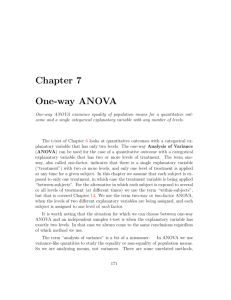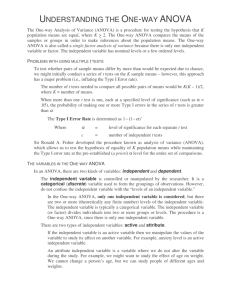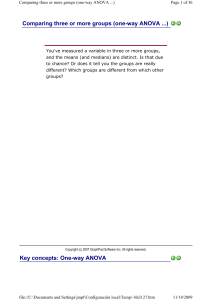Chapter 11
advertisement
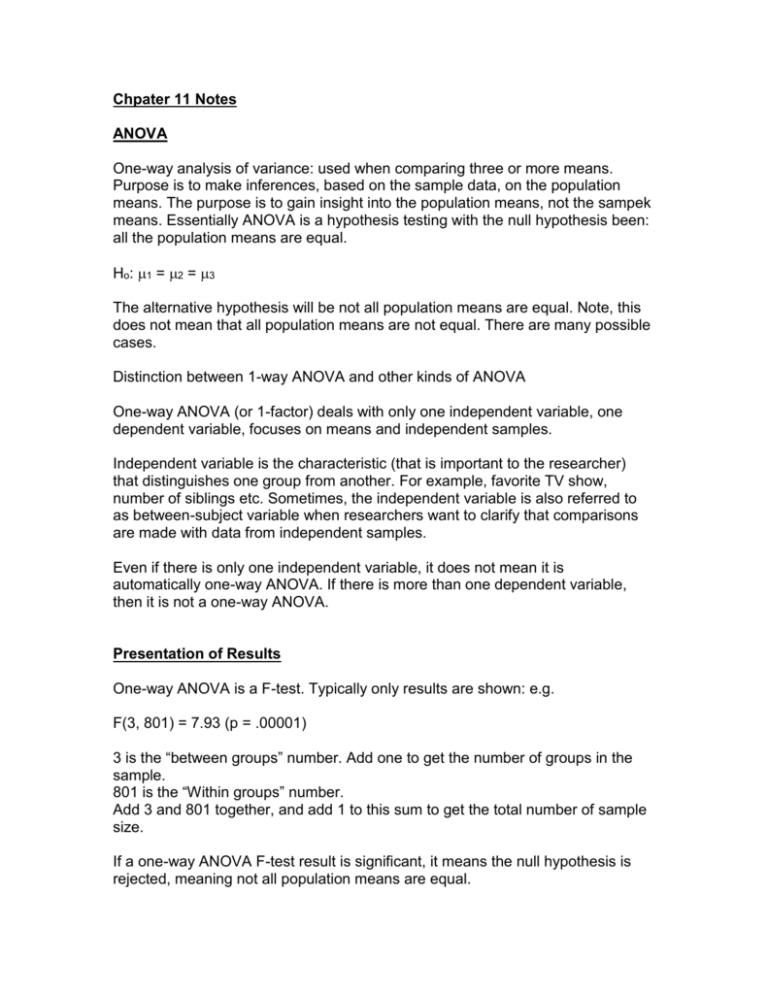
Chpater 11 Notes ANOVA One-way analysis of variance: used when comparing three or more means. Purpose is to make inferences, based on the sample data, on the population means. The purpose is to gain insight into the population means, not the sampek means. Essentially ANOVA is a hypothesis testing with the null hypothesis been: all the population means are equal. Ho: 1 = 2 = 3 The alternative hypothesis will be not all population means are equal. Note, this does not mean that all population means are not equal. There are many possible cases. Distinction between 1-way ANOVA and other kinds of ANOVA One-way ANOVA (or 1-factor) deals with only one independent variable, one dependent variable, focuses on means and independent samples. Independent variable is the characteristic (that is important to the researcher) that distinguishes one group from another. For example, favorite TV show, number of siblings etc. Sometimes, the independent variable is also referred to as between-subject variable when researchers want to clarify that comparisons are made with data from independent samples. Even if there is only one independent variable, it does not mean it is automatically one-way ANOVA. If there is more than one dependent variable, then it is not a one-way ANOVA. Presentation of Results One-way ANOVA is a F-test. Typically only results are shown: e.g. F(3, 801) = 7.93 (p = .00001) 3 is the “between groups” number. Add one to get the number of groups in the sample. 801 is the “Within groups” number. Add 3 and 801 together, and add 1 to this sum to get the total number of sample size. If a one-way ANOVA F-test result is significant, it means the null hypothesis is rejected, meaning not all population means are equal. Multiple one-way ANOVAs Sometimes researchers will conduct multiple one-way ANOVAs (instead of 2-way, 3-way ANOVAs) and present the results on the same table. This case, each oneway ANOVA will have its own null hypothesis. To compensate for inflated Type I Error, the Bonferroni Adjustment technique is used. Each one-way ANOVA level of significance is obtained by dividing the desired overall study significance by the number of tests. Assumptions of one-way ANOVA Same assumptions as for other tests covered previously: Independence Randomness Normality Equal variance Tests can be conducted prior to one-way ANOVA to see if assumptions are met (give extra credit to researchers who did). If assumptions are not met, several options: Identify and eliminate outliers Transform sample data Use other tests (don’t use one-way ANOVA) Statistical vs Practical Significance To avoid with a result that is statistically significant but not practically significant, researchers can do several things: Conduct power analysis before data is collected to see how large sample size should be (for a given power, level of significance) Estimate strength of association Compute effect size If null hypothesis is rejected, the result of not all population means are equal may not be useful to researcher. They may want to probe further. This case, they can use post hoc analysis or comparison analysis. (Covered in Chapter 12)

